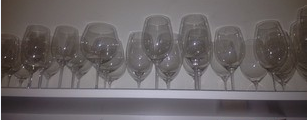I attended the Newcastle Food and Wine show several weeks ago, and was intrigued and bought one of the very first Vino DeCanto wine preservers ever sold. Up until now, I have used a manual air extraction pump to preserve an open bottle of good wine for several days, but it certainly does not preserve wine for several weeks or longer. Vino DeCanto claims they have stored wine in the preserver for up to 14 months!.
I have been exploring buying an expensive four-bottle argon replacement system to keep up to four bottles of wine open for longer periods of time and have also been reviewing the use of WineSave and Coravin. WineSave is an argon replacement unit which is good for about 50 applications. Coravin is unique in that it sticks a fine needle through the cork of a bottle, extracts the amount required and then replaces the wine with argon gas. The Vino DeCanto operates differently in that it does not replace the empty space with argon (or similar) gas, but rather eliminates the space all together by using a plunger with an O-ring sealer to keep the remaining wine away from air.
Now that I have used it several times, I feel comfortable providing a review of my findings.
The positives:
- The Vino DeCanto does the job as advertised and preserves the wine. I had approximately a half-bottle of 1998 Lindeman’s St. George Cabernet Sauvignon (a most outstanding wine BTW!) in the Vino DeCanto for 14 days and it tasted as fresh as when I opened the bottle. It had not lost fruit, had not turned brown nor in any other manner look or taste different than when I opened it. The Vino DeCanto does the job!
- You do not need to continue to buy argon capsules to fill wine bottles; therefore your initial investment in the Vino DeCanto is your entire investment.
- The Vino DeCanto is beautifully engineered, of very high quality and quite attractive to look at.
The negatives:
- The Vino DeCanto preserver is heavy and somewhat cumbersome to move around.
- You can only use it for one bottle at a time, whereas WineSave or Coravin can be used on multiple bottles you have opened. Therefore, if you want to keep several bottles open at a time, you need to purchase several Vino DeCantos.
- It is operationally difficult to use without squirting wine out of the top or dripping from the spout. Even after several uses and being careful about what I was doing, I still had a small mess to clean up each time I have used it.
- The height of the Vino DeCanto is less than the height of a typical red wine glass, so you either need to mount the device on a stand or hold the glass at an angle underneath the spout.
- It is difficult to judge how long to push the plunger for as the wine trails for a while after you stop pushing the plunger, so it is easy to overfill the glass
I purchased my Vino DeCanto for Aus $229 at the show price. It is expected to retail for around $300. WineSave costs about $35 and is good for approximately 50 applications before you need to buy another one. Coravin costs about $300 and the replacement capsules cost around $10 (more or less based on how many you) buy and are good for around 15 uses per capsule. Both WineSave and Coravin can be used on as many bottles as you have opened. I have not used the Coravin myself, but several friends, including some of Sydney’s top sommeliers have and swear by it.
Given the price, limitation of only being able to use it on one bottle at a time, and the operational challenges I encountered with the Vino DeCanto, I am unlikely to buy another one unless I can be convinced it is easier to use than I have found it. I may be looking at the Coravin as my ongoing solution to preserving fine wines.
Steve Shipley, author Wine Sense, available now!
© 2014. Steve Shipley. All rights reserved.
SAZ in the Cellar on Facebook
Wine Pinterest Boards
Twitter: Steve Shipley @shipleyaust; InkIT Publishing @inkitpub















